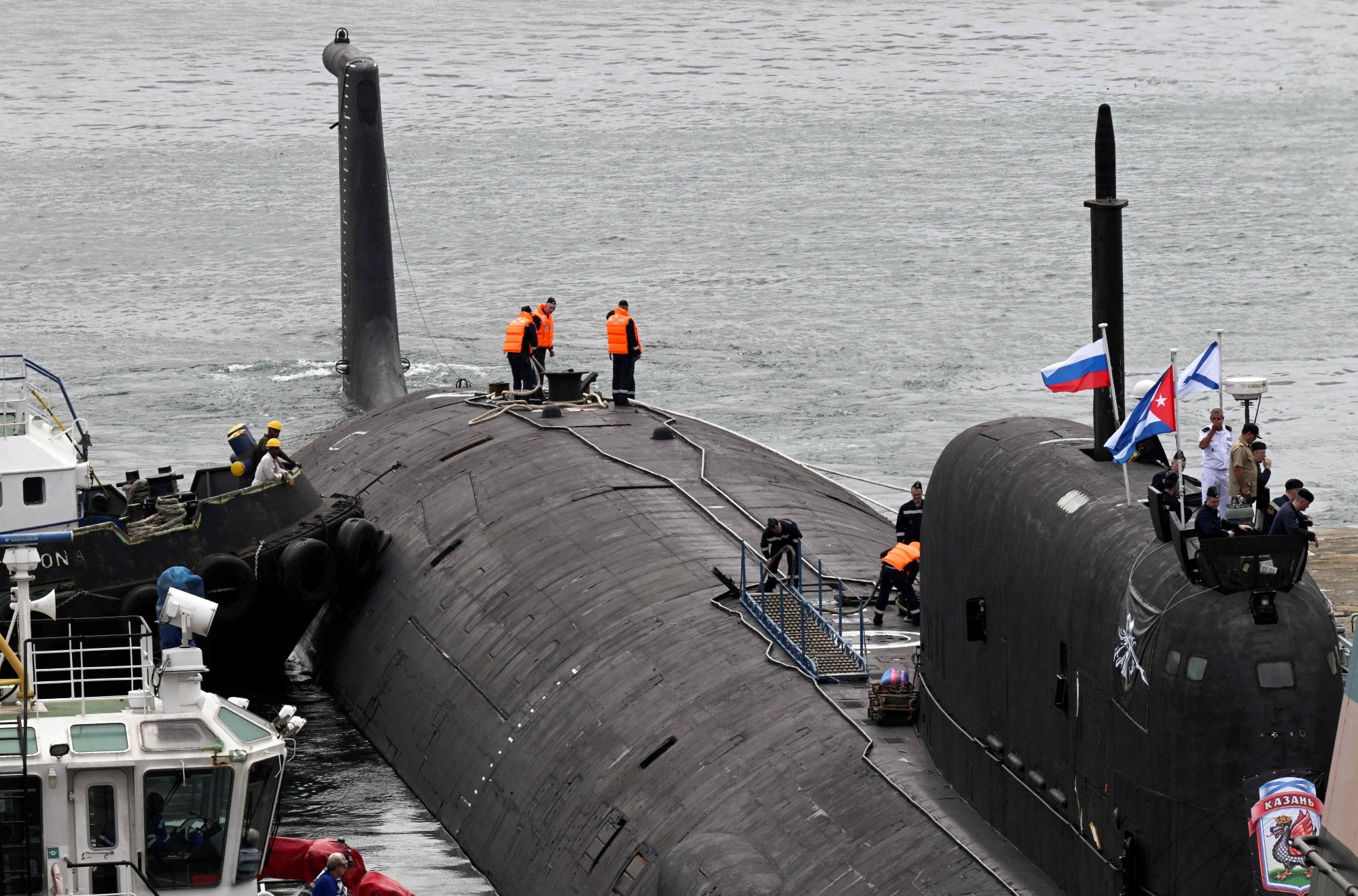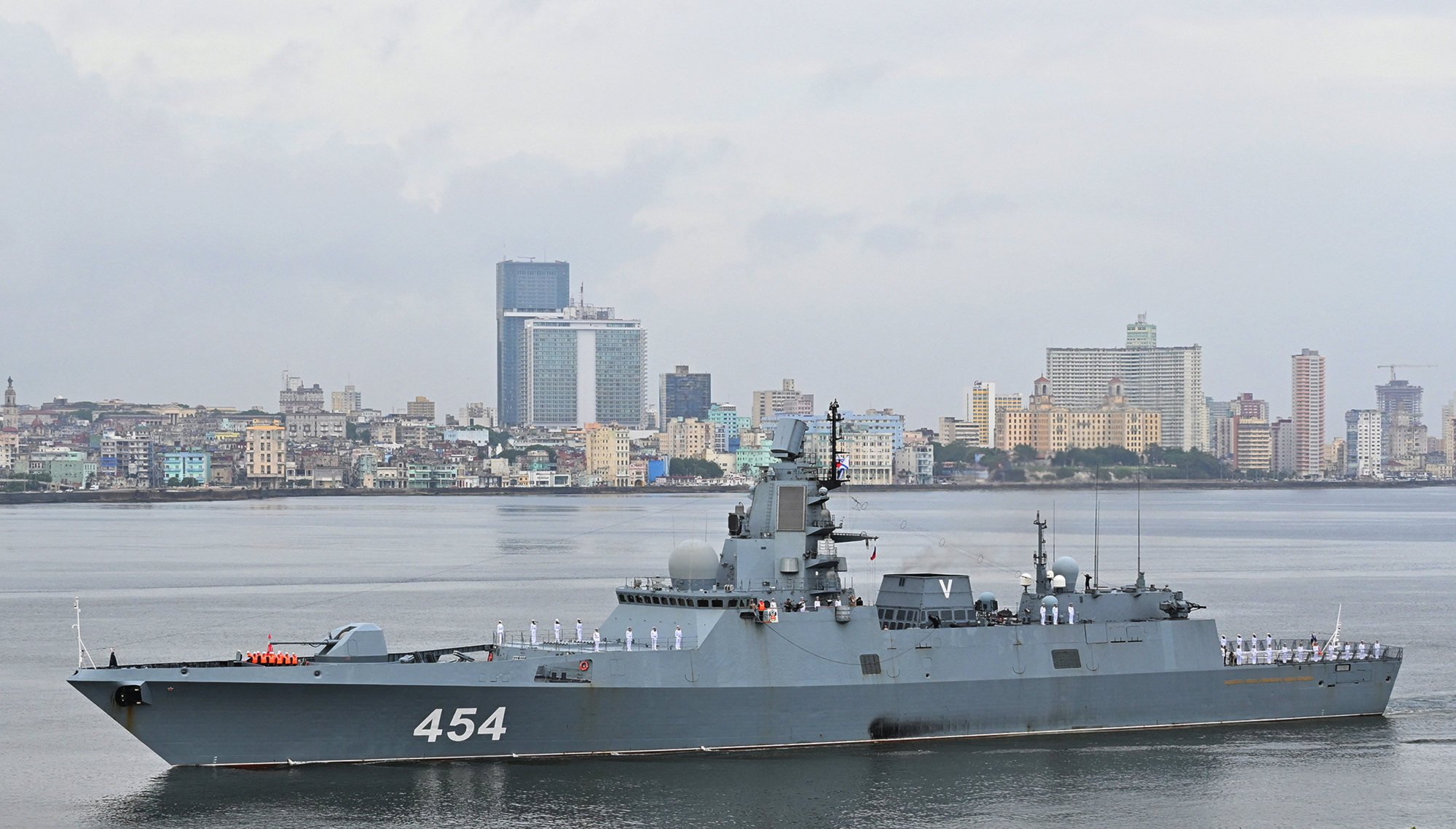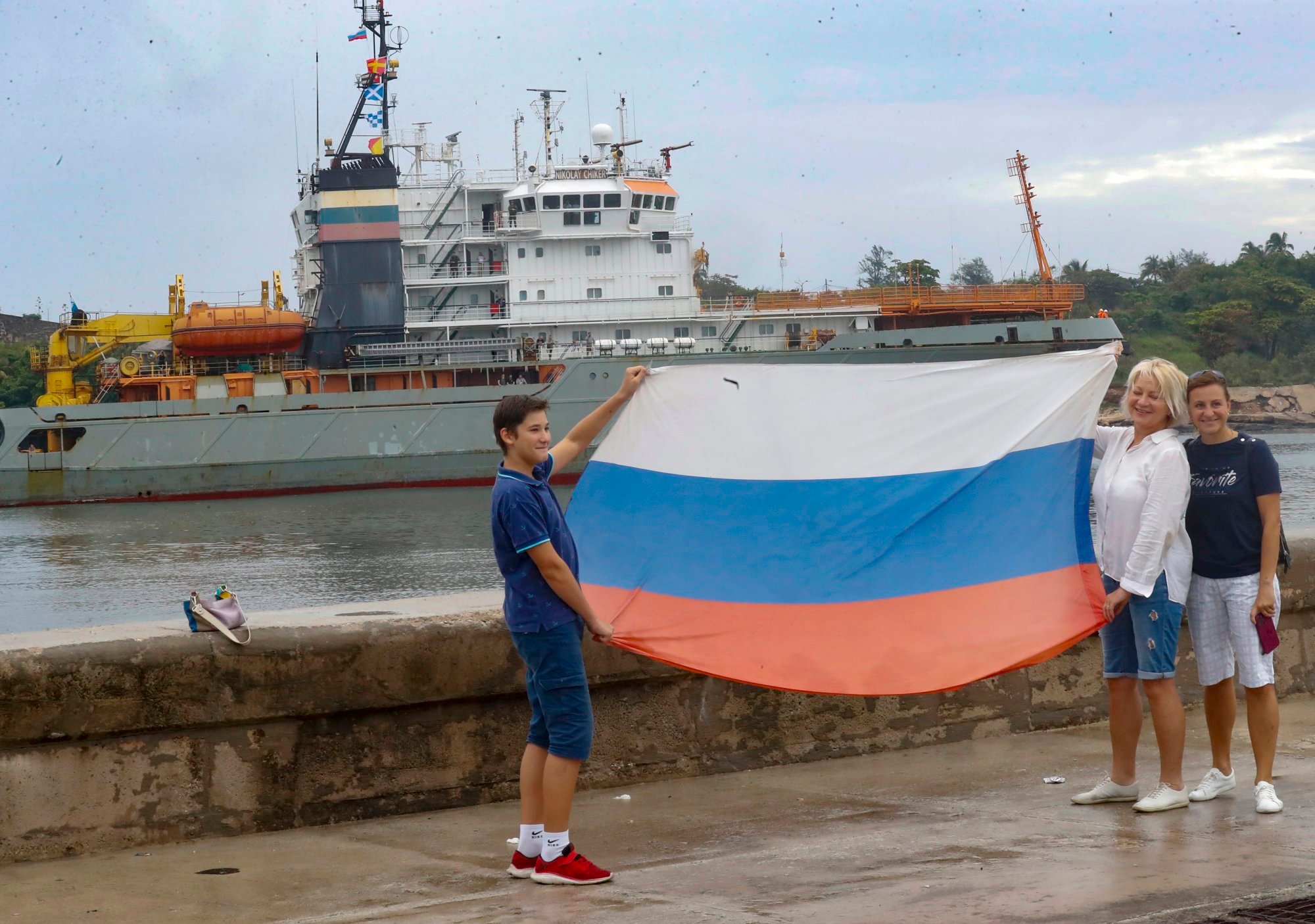Russian submarine deployment to Cuba worries Pentagon that Moscow will stalk U.S. coasts
- A Russian nuclear-powered submarine and other naval vessels have arrived in Cuba, in a show of force amid spiraling US-Russian tensions
The Russian submarine that just showed up off of Cuba is one of a new class of subs that has worried the US and NATO for years
- Russian naval ships arrived in Cuba on Wednesday ahead of military exercises in the Caribbean.
- One of the vessels, the submarine Kazan, is one of a new class that has worried the US and NATO.
- The Yasen-class subs are quiet, difficult to track, and heavily armed for attacks against land- and sea-based targets.
Russia’s formidable Kazan nuclear submarine arrives in Cuba under watchful US eyes
- The vessel will take part in military drills, along with the Admiral Gorshkov frigate, which can carry Zircon hypersonic missiles
One of Russia’s most concerning new submarines has pulled up off the coast of Cuba ahead of planned military exercises in the area.
The Kazan, a nuclear-powered cruise missile submarine, is one of a relatively new class of subs that has worried the US and Western militaries for years due to its stealth and strike capabilities.
Three Russian ships, as well as the Kazan, arrived in Cuba on Wednesday for a five-day official visit before a large, simultaneous air and maritime exercise in the Caribbean. The deployment includes the Admiral Gorshkov frigate, which is armed with Zircon hypersonic missiles, another challenge for Western militaries.
While US officials have said they are monitoring the vessels and do not anticipate any imminent danger in the region, the Kazan’s arrival is notable. US and NATO officials have long expressed anxiety over the capabilities of the Kazan and other subs like it.
- The Russians began work on the class during the Cold War, and the first sub in the class, the Severodvinsk, was commissioned late in 2013.
- The subs’ newer, more advanced features make them quiet, difficult to track, heavily armed, and capable of attacks against land- and sea-based targets with little to no notice.
- These warships can carry Oniks and Kalibr cruise missiles and, at a later date, the new Zircon missiles.
The shift in capability with the emergence of the Yasen-M class submarines suggested a change in use. Per a 2021 Royal United Services Institute analysis, the Kazan’s “capacity to launch a range of anti-ship and land attack missiles” suggests that “long-range strike missions appear to be superseding sea lines of communication (SLOC) interdiction as a primary task”.
In 2021, US Air Force General Glen VanHerck, head of US Northern Command and North American Aerospace Defence Command, said that the subs “are designed to deploy undetected within cruise-missile range of our coastlines to threaten critical infrastructure during an escalating crisis”.
VanHerck, along with other US officials, have said the Yasen-class subs are “on par with ours” and repeatedly warned about the increasing presence of these vessels off of the US coast.
Russia’s deployment in Cuba serves multiple purposes. It comes before Caribbean air and maritime exercises, the first Russia’s held in the area since 2019. It serves to strengthen Russia-Cuba ties. And it is a show of force to the US amid the war in Ukraine.
Tensions are particularly high after the US hesitantly agreed to allow Ukraine to use its long-range weapons to strike targets in Russian territory.
US officials have said that movement of these vessels into the area is not a direct response to these developments or an escalation, noting that Cuba has hosted Russian ships every year from 2013 to 2020, and the Russian exercises are routine.
The vessels in this group, however, are notably among Russia’s more advanced or carrying newer weapons. In the past, Nato officials have flagged the Yasen-class submarines, for instance, as “one of the big strategic challenges” the alliance faces.
Russian sub deployment off Florida worries Pentagon that Moscow will stalk U.S. coasts
WASHINGTON — Russia’s deployment of a naval flotilla to Cuba on Wednesday was generally consistent with routine military posturing by Moscow — with one exceptional detail, Jake Sullivan, the U.S. national security adviser, told reporters aboard Air Force One on Wednesday.
“There are elements of this one that are different, that are distinct,” he said. “They have a submarine associated with this port visit that they have not had before.”
The first deployment of a nuclear submarine to Cuba since the end of the Cold War has served not only as a message to the Biden administration of Moscow’s displeasure with continued U.S. support for Ukraine, but also of its increasing ability to stalk U.S. coastlines with stealth submersibles — a growing concern for the U.S. military, multiple officials familiar with the matter told McClatchy and the Miami Herald.
Just last month, the head of the U.S. Northern Command warned Congress that Moscow could soon deploy 12 similarly advanced nuclear submarines split evenly between the Pacific and Atlantic, creating a “persistent conventional threat” to the United States.
“The threat will only become more acute later in the decade,” Air Force Gen. Gregory Guillot said, once the Yasen-class submarines are regularly armed with hypersonic missiles capable of traveling many times the speed of sound.
U.S. officials are now assessing whether the current Russian deployment, which will culminate in military exercises in the Caribbean, could be the beginning of a pattern of Russian submarine activity that will require a more sustained change in U.S. force posture.
The Kazan, a Yasen-class sub, joined three other Russian combat vessels that U.S. officials characterized as routine visitors to Cuba’s shores.
The deployment is “something we watch closely, carefully,” Sullivan said.
‘They will definitely lose her’
As the Kazan breached the waters of the port of Havana on Wednesday, Russian state media reported that the vessel had demonstrated it is “capable of quietly approaching U.S. shores” within 50 kilometers, or about 30 miles. U.S. officials acknowledged to McClatchy on Tuesday that the Russian fleet had skirted the coast of Florida by a similar distance on its approach to Cuba.
“If she wants to hide, they will definitely lose her, she will break away,” said Mikhail Budnichenko, director of the submarine program, as quoted by TASS, a Russian state-run media organization. “This is a very secretive ship, this is the latest achievement of Russian science and technology.”
The Kazan, a nuclear-powered vessel capable of carrying and firing nuclear cruise missiles, is a state-of-the-art submersible that is part of a newly designed fleet intended to replace Russia’s aging Soviet-era nuclear submarines.
A U.S. official told McClatchy and the Herald that U.S. military assets never lost track of the Kazan on its approach to Havana. McClatchy confirmed on Tuesday that the U.S. Northern Command had dispatched three guided-missile destroyers — the USS Truxtun, USS Donald Cook and USS Delbert D. Black — as well as a Coast Guard cutter and a Boeing P-8 maritime patrol aircraft to patrol the Russian military movements.







No comments:
Post a Comment